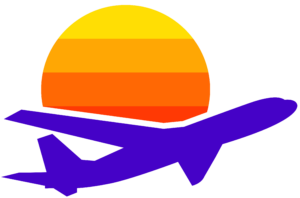The Plitvice Lakes National Park, located in the heart of Croatia, is known for its breathtaking natural beauty and rich cultural heritage. One of the lesser-known gems within the park is the old town of Krčingrad. Perched on a hill between the Gradinsko and Kozjak lakes, this town was once a stronghold protected by natural formations and a defensive wall made of tufa ashlar. Despite its architectural significance, much of Krčingrad’s history remains shrouded in mystery due to a lack of written sources. However, archaeological research suggests that it was built in the late 13th or early 14th century by the influential Babonić family. Besides its strategic location along the medieval commercial route, Krčingrad showcased the power of the noble families of Slavonia during the late Middle Ages.
The Široka Luka and Plitvica Selo region within the park contains remnants of the Church of St. Mark, also known as St. George. First mentioned in the 13th century, this discovery has shed new light on the history of the area. It challenges the false claims of ownership in the 20th century and provides evidence of its ancient roots. Archaeologists have excavated 13 graves within the church, dating from the 13th to the 15th century. These findings have been analyzed by the Anthropology Centre of the Croatian Academy of Sciences and Arts. The region’s tradition of pilgrimage to the ruins of the church on St. George’s Day adds a touch of allure to its story. Through these archaeological revelations, the Plitvice Lakes National Park not only uncovers lost towns and churches but also provides insights into the continuity of settlement and the region’s rich history.
Legends and myths have played a significant role in shaping the local culture and history of the Plitvice Lakes National Park. Each of the park’s 16 lakes has its own unique story and name. However, one legend stands out above all others – the legend of the Black Queen. According to this tale, a severe drought once plagued the region, leaving it barren and devoid of life. The people gathered at the Spring of Life to pray for rain, except for the richest and most selfish man of the tribe, who refused to repent. The tribe elder exiled him, and as he did, a rainbow emerged above the spring, bringing hope and joy. The Black Queen appeared, answering their prayers, and as soon as she departed, rain poured down, filling the lakes. The Prošćansko lake, the first of the Upper Lakes, derived its name from the word “prositi,” meaning “to pray” in Croatian. To this day, the legend of the Black Queen and her golden chariot, golden hair, and fairies continues to be passed down through generations, adding to the enchantment of the park.
As one of the significant architectural monuments in the park, Hotel Plitvice holds a special place within its boundaries. Constructed in 1958 based on the designs of renowned Croatian architect Marijan Haberle, the hotel boasts a T-shaped floor plan spread across multiple stories. It seamlessly blends with its natural surroundings, and even after its renovation in the 1990s, it retains retro elements that make it a truly unique and charming place to stay. Recognized as a protected cultural heritage site of the Republic of Croatia, Hotel Plitvice is a testament to the park’s commitment to preserving its architectural treasures.
Located in the captivating village of Korana, encompassed by the meandering Korana River, is a mill that holds a significant place in the cultural heritage of the Plitvice Lakes National Park. In the past, the village was home to five operational mills that harnessed the power of the water to grind wheat into flour. These mills played a crucial role in ensuring the locals had the grain necessary to feed their families. Despite remaining abandoned for some time, the mills have undergone successful renovations, making them functional once again. Renovating these mills posed a challenge as no old building plans were preserved, but through dedication and commitment, their architectural and cultural heritage has been preserved for future generations.
The preservation of cultural heritage is not only a responsibility but also a testament to our commitment to safeguarding natural and historical values. The Plitvice Lakes National Park’s archaeological research, legends, architecture, and the preservation of sites like the Korana village mills highlight the deep connection people have had with this area throughout history. By integrating cultural heritage into the park’s natural surroundings, visitors can immerse themselves in its rich history and culture, becoming custodians of this invaluable heritage.






